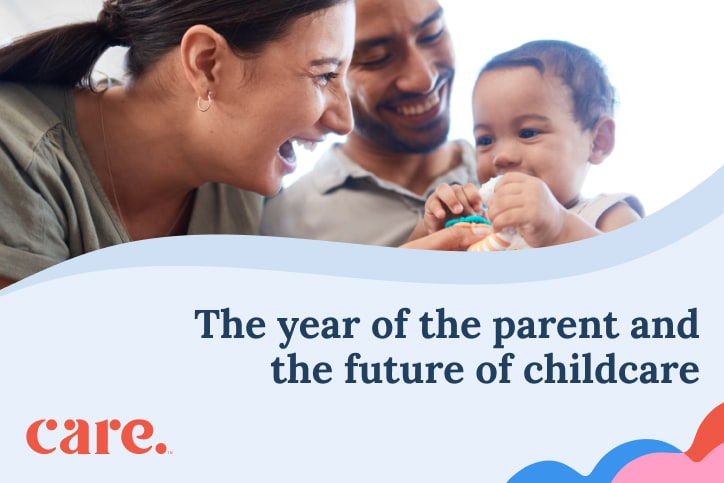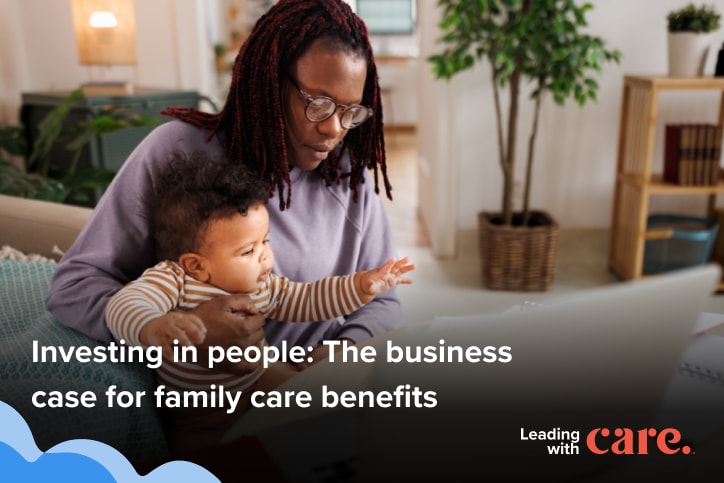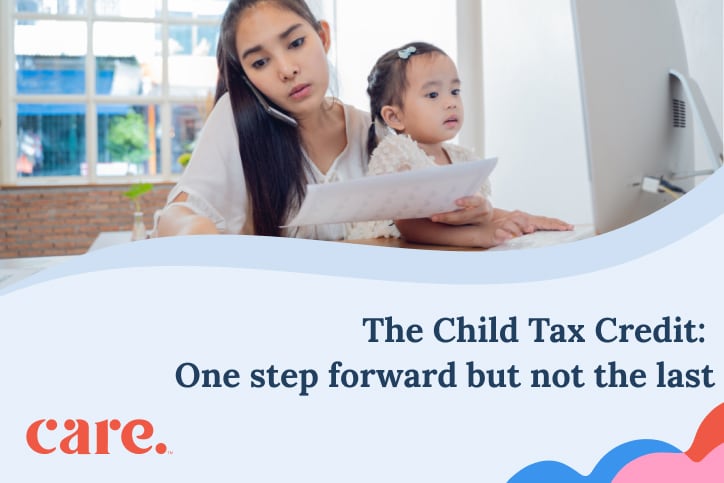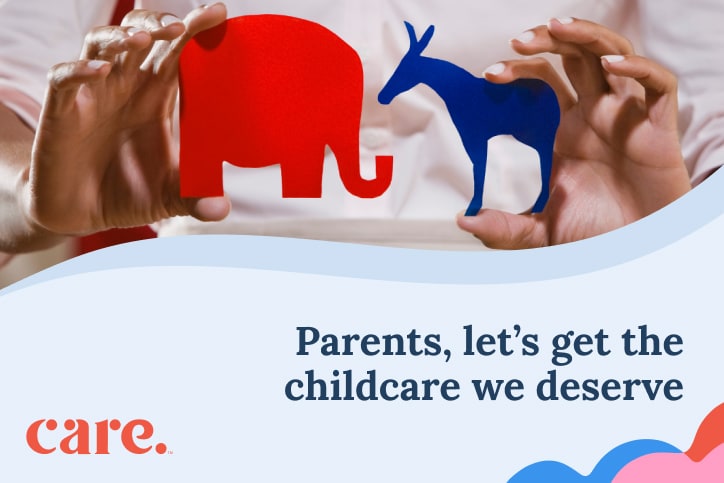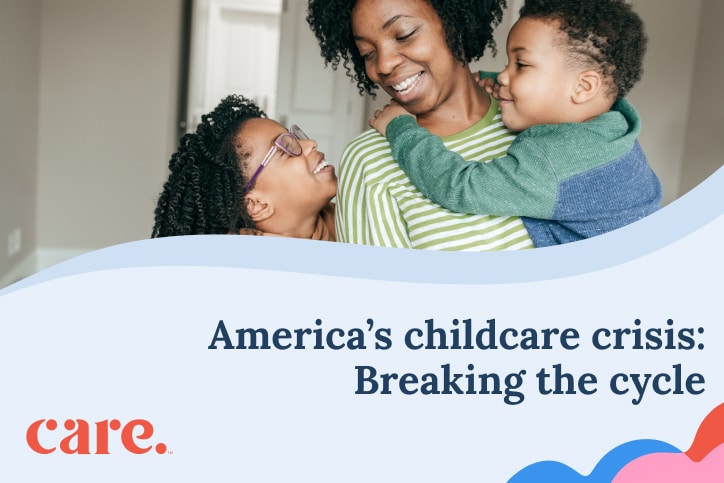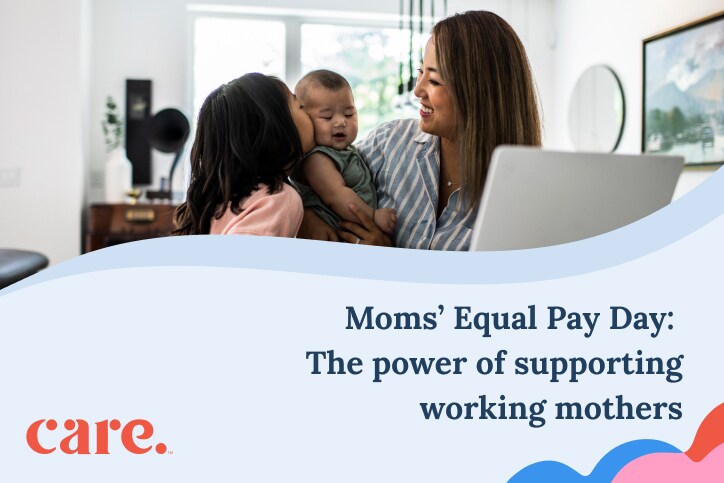Earlier this month, we unveiled Care.com’s 2024 Cost of Care Report, our 11th year documenting the cost of childcare and its impact on American families. When I sat down to write this post about the findings, I began with the thesis you might expect: The numbers are staggering and something must change. That is absolutely true – more on that to come – but another truth crystallized for me as well: As we roll into this presidential election year, there is more momentum and power to force real change to our care system than ever before. Hear me out on this: we are witnessing a unique convergence of economic, political, and societal issues that have made our childcare crisis a leading story in our national discourse.
First there was the rise and spread of childcare deserts, then the severely reduced care options during the pandemic, and now families are facing the realities of the child care cliff, including more daycare closures and extended waitlists. Each of these events has been an inflection point and together, they demonstrate once and for all that care can either be an economic lever for America or a major threat. Collectively, we have the power to make it the former. And what we all do over the next several months, on election day, and beyond is the key. So how and where do we start?
The state of childcare in 2024
The cost of childcare
First, we must understand the reality of childcare in America today. The 2,000 respondents to our survey told us the following:
- On average, they spend 24% of their household income on childcare expenses, which is more than three times what the U.S. Department of Health and Human Services deems affordable (7%).
- This translates into an expense that costs nearly half (47%) of families $18,000 or more each year.
Given these high costs, we dug deeper to understand just how families were footing care bills. Candidly, this data left us shocked:
- 35% of respondents reported using some of their savings to augment care costs.
- Of that group, they were using nearly half (42%) of their savings on childcare.
- On average, those savings would only last six months.
In other words, families are digging themselves into deep financial holes just to cover care costs for the first five years of their children’s lives. The first five years.
The impact of the childcare cliff
On September 30, 2023, the country went over what has been named “the childcare cliff,” the expiration of federal funding that could impact 70,000 child care programs. Some questioned if the impact would be that vast and it was unclear how soon any impact might be felt. With our 2024 Cost of Care report, we were able to document some of the first real data about the cliff impact, and it is decidedly real.
Our survey – which was in the field just six weeks after the cliff – revealed the following:
- Nearly 40% of parents (39%) were already paying more because their daycare was impacted.
- A vast majority of parents (79%) expect to be impacted by the cliff in 2024.
- A majority (54%) expect they will spend an additional $7,000 or more on childcare this year due to the cliff.
Regrettably, cost represents just one facet of the problem; availability is another. Many parents now struggle to secure a daycare slot with 43% having a harder time finding care versus prior years. Waitlists are not a new occurrence – 51% of families reported to be living in a “child care desert” in 2018 – but they are becoming longer and more pervasive.
- Nearly two-thirds of parents (65%) on the hunt for a daycare slot often find themselves on waitlists and the vast majority (81%) likely sit on multiple lists simultaneously.
- Since the onset of the cliff in September 2023, 62% of waitlisted parents say centers have closed while they sat on their waitlists and 54% have experienced waitlist extensions.
- Waiting is costing parents an additional $200 or more a week on care to fill in the gap with other care options.
And finally, the cliff could cause a repeat of what happened during the pandemic, when daycare closures forced nearly 3 million women out of the workforce to care for their children (AKA the Great Resignation). Though women have now returned to work at pre-pandemic levels, we cannot forget what is at stake. According to an analysis from the National Partnership for Women and Families, the Great Resignation cost the U.S. economy more than $650 billion each year. Can our economy afford that again?
How we move forward
While these numbers are startling, we at Care believe there is a bright side in all of this. Each hit that parents and the childcare industry have taken over the last several years has done what no amount of research or lobbying could do: prove to everyone, once and for all, that care is the key to the economy. At the end of the day, as a nation, we can either nurture care and nurture the economy, or continue to starve care and starve the economy. It is certainly clear what parents would say and given that 40% of American households include children, what parents say matters.
In fact, while parents have no doubt felt powerless to control the events of recent years, I would posit that, as we head into the 2024 presidential election, they have more power now than ever before. It is well documented that childcare is a bi-partisan issue and that is understandable since every elected official counts parents and families among their constituents. The obstacle to rebuilding our care infrastructure has been agreement on what should be done and how we pay for those changes. And so, the issue has been repeatedly back burnered and nothing meaningful has happened in decades. But what if parents used their collective voice – in the form of votes – to force the issue? What if they made it clear to our elected officials and those who seek to lead us that childcare’s time has come and without a plan for childcare, those officials might not have jobs?
This is more plausible than ever before. Nearly 9 in 10 parents (88%) responding to our survey said a candidate’s position on childcare policy will influence their vote and the majority (59%) said childcare policy was a top 3 priority issue impacting their voting decision. And parents expect to hear plans before they enter the voting booth in November with 91% of parents saying it is important for childcare to be discussed during the debates. In fact, childcare ranked second as the topic parents most wanted addressed during the debates, behind the economy and ahead of other important issues such as healthcare, climate change, racial and social justice, and immigration.
We have roughly eight months to mobilize…eight months to ensure that every parent steps into their power. 2024 will be the year childcare finally takes centerstage in Washington and Care will be there every step of the way amplifying your voices and making sure you are heard. Stay tuned for what Care has to come. Together, let’s make 2024 “The Year of the Parent.”
